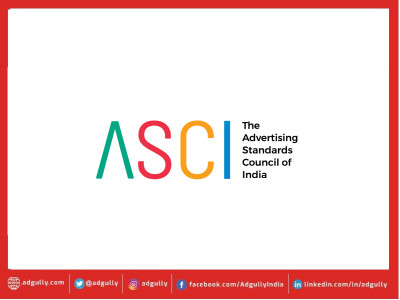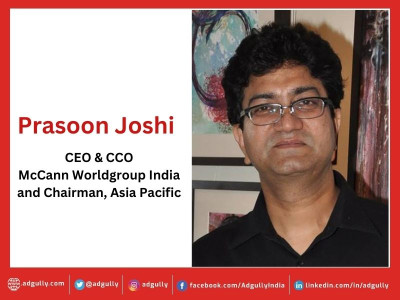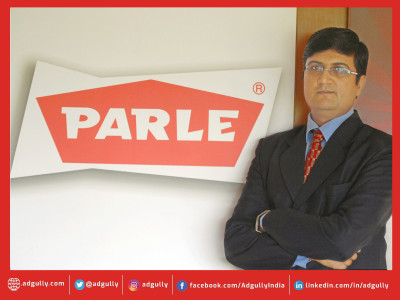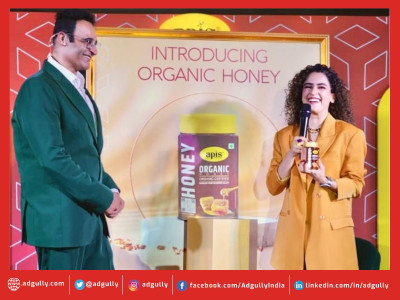Indepth: Beyond Devi and Diva - The big change in brand communication for women
From being shown as homemakers and caregivers to empowered women leading countries and businesses; from muted tones of period care to bold conversations like “Tough the pickle”; from taking pride in keeping an immaculate home to gender equality in household chores – the many roles that women play effortlessly and the way brands communicate with women and depict them in advertisements, have together undergone a sea change.
The 4th edition of Women Disruptors is all set to be held in Mumbai on Monday, March 6, 2023. This initiative from Adgully endeavors to highlight the trailblazing women leaders in India. Click here to register to attend.
Over the years, brands have veered away from the stereotypical depiction of women in ads – either a devi or a diva; the ever smiling mother preparing two-minute noodles for her hungry kid or a femme fatale in a male innerwear or deo spray ad. This evolution in brand communication did not happen overnight, but was a gradual one as consumer sentiments changed and as women began asserting themselves and got the due recognition for their contribution – be it at home, the workplace, in the business sphere and in society.
One would recall Lalitaji from the 1980s, the no-nonsense housewife who would state emphatically why “Surf ki karid-dari mein hi samajhdari hai”. That was probably the first time when an Indian housewife was portrayed as a self-assured and intelligent shopper. This ad was a changemaker for the entire ad industry.
Evolution in Brand Communication
Talking about how has brand communication has evolved in addressing women, Manisha Kapoor, CEO, and SG, the Advertising Standards Council of India, elaborated, “Advertisers are recognising that consumers have also moved very much ahead. The consumer has made a lot of strides in their life, particularly woman – that has been one of the biggest social changes in the last 15-20 years. Women are also cognizant of the roles that are being portrayed.”
Adding further, she said, “Advertising is putting out a certain message and aspiration on those messages. Advertisers should make those messages progressive rather than reinforced. The segment is moving in a direction it should move much faster.”
Agreeing with this, Vaishali Sharma, Head - Marketing, Sony SAB, PAL, and Hindi Movies, too, said, “Brand communication is certainly reflecting the changing attitude towards women in society. Brands are increasingly attempting to show reflections of the new age women and a transforming view of women. Occasionally, it also showcases some remarkable narratives that are bolder than the rest, challenging the regressive attitude towards women in society.”
Richa Singh, Managing Director, India and Middle East, Natural Diamond Council (NDC), noted, “Media and advertising have always mirrored social norms and strongly influenced perceptions. The shift in the portrayal of women from a mere ‘homemaker’ to a ‘change maker’ has taken sustained efforts from brands and many years of unlearning. Women today are represented more accurately as empowered decision-makers, who have the freedom of choice in their workspace, their personal lives, their investments, and how they spend their money. We, too, have tried to capture the same in all our campaigns and our latest film ‘To Treasure Now and Forever’, featuring global ambassador Lily James, celebrates the power of, and speaks to, every independent modern woman in the cosmopolitan world, who has an innate resilience and is willing to break traditional stereotypes. She is navigating ‘her’ way forward, and embracing her individuality, and love for natural diamonds as a means of self-expression, along the way.”
“Over the years, the advertising industry has undergone significant changes in how it communicates with women and “through” women. We’ve seen women being a part of advertising cars, men’s innerwear, men’s perfume, and much more. But unfortunately, lingerie has always been discussed in whispers in our nation. This is one of the major reasons why Indian women still find it difficult and awkward to purchase lingerie at local establishments, mainly because they are typically managed by men. We’ve all heard tales of ladies finding themselves in amusing or humiliating situations at their local lingerie shop, but with time lingerie has changed the face of the innerwear industry,” pointed out Rachika Singh, Senior Brand Manager, Clovia.
She further added, “Until now, Bollywood actresses and influencers have also expressed their discomfort and awkwardness in talking about lingerie. But today, Clovia has managed to normalise conversations around a taboo topic like lingerie. With its maiden TV campaign – “Happy is my Superpower” – featuring actor Shraddha Kapoor, Clovia has brought lingerie into Indian households. The actress features in the brand’s first-ever national TV ad campaign themed around ‘Happy is my Superpower’.”
"Brand communication has evolved significantly in addressing women over the years, and it is likely to do so as society as a whole continues to progress towards greater gender equality. With the rise of women’s movement and their empowerment, brands are adjusting their messaging to be more inclusive to women. A significant change in advertising and marketing one can witness is that brands moving away from objectification and sexualization of women. This is not only outdated, but also harmful and offensive to women. Instead, women today are portrayed as strong, empowered and multifaceted individuals with diverse interests and aspirations. Women come from all walks of life, body types, ethnicities and cultures. Brands today have realised the value of female diversity and are using campaigns that celebrate these differences." said Sonali Bhattacharya – Head of Marketing, Kids TV Network, Viacom18
Seema Poptani, VP, Marketing, mPokket, noted, “In the past, advertising was often patronising or sexist, but over the years, brand communication and advertising have evolved significantly in the way they address women. Women were depicted as caretakers and homemakers in early advertisements, while men were depicted as breadwinners and decision-makers. Since then, these messages have evolved to reflect the positive changes in society, as well as the growing economic and social influence of women. As women’s liberation spread through India, women began appearing in more empowered roles, challenging gender stereotyping. Instead of being shown as housewives, ads began to show women working outside the home and pursuing careers. Brands are now applauding women's feats across all walks of life and celebrating women as strong, confident individuals making their own decisions. Brand messaging has also evolved to focus on lifestyle and values, rather than just the products. The evolution of brand communication and advertising in addressing women reflects the progressive changes in the social and economic roles of women in society, and the growing recognition of their importance as consumers and decision-makers.”
Creative strategies in channelising the character
Isha Mathur, Account Director, 80db Communication, noted, “Time has evolved a lot in the last decade, and this change is across sectors, industries, and conversations. Women objectification was beyond common till a few decades back, but in recent years the mindset has been rehabilitated and brands are cautiously curating female characters.”
She further said, “While channelising the thoughts for a campaign it is crucial to understand the target audience and the campaign goal and accordingly decipher the medium to be used. The constant voicing and awareness from both men, women, and society at large played a critical role in this change and it is essential that we keep progressing here.”
Vaishali Sharma added here, “The role of women in society has changed significantly over the years and they are no longer content with being portrayed as passive consumers but seek to be viewed as active contributors to society. On Sony SAB, we’ve always prided ourselves on telling stories and building characters of women who are much more progressive and forward looking, whose voice is heard on the channel and are strong contributing forces in the families or in the society.”
Rachika Singh pointed out that brands are recognising and responding to the changing social and cultural norms by collaborating with female leaders and influencers to create campaigns that resonate with their target audience. “We at Clovia signed up with leading multiple renowned celebrities from the Bollywood and TV industry, who have experienced and liked our products and who share personal experience stories with our audience. We recently launched our personal care category, and with that strengthened the social media presence and made a connection with the audience instantly,” she added.
She further said, “As the product-market fit has been a roaring success for us and the feedback and customer response/ retention is epic, the focus now is primarily to meet demand and ensure growth on all channels of distribution. Understanding the changing dynamics of society, we are making products that are relevant to both masses and classes. The fun for a brand is to understand the audience and nuances of each channel and ensure a genuine Omni experience for customers and sellers. This is our main focus for the next 5-6 quarters.”
According to Richa Singh, “Brands are now more cognizant of changing sensitivities regarding the portrayal of women. We have seen the emergence of women icons across fields – be it in the corporate world, politics, sports or cinema. They have inspired countless others to follow in their footsteps and every brand worth its salt has had to change its approach. We constitute half of our population and are fast becoming the most critical to every brand’s success. The growing influence of women in the marketplace has led to advertising communication revising itself to become more versatile, adaptable and long-lasting. At NDC, we have realised that most young women today are no longer waiting for their partners to gift them their first natural diamond; they are stepping out, buying their diamonds and styling them their way. They derive a sense of confidence from their self-purchase and are celebrating life’s small and big milestones with them, and you can see the same reflected in our campaign.”
Manisha Kapoor noted, “When a man is cooking in the kitchen in any advertisement, they make it look like such a big deal, by doing that you are making it look exceptional, we should normalise it. We should normalise what actually is happening in the house today. That is the same case with women going out today. Even when advertisements tried to show women in a progressive way, there is a need for it to be more thoughtful.”
Seema Poptani lamented the fact that the recognition of women’s changing roles in our society has been slow. She noted, “For decades, women were mainly seen as stay-at-home mothers, whose roles were limited to taking care of the home and children. However, there has been a significant, and progressive, shift in the role and influence of women in the society in recent years. Women are now recognised as homemakers, working mothers, breadwinners, and leaders in our society. As a result of this shift, brands have had to learn to keep up with the evolving role of women in the society. Many brands have begun to recognise the contributions that women make to society and have started to develop products and campaigns that speak more authentically to women.”
"As a brand we recognise that progressive portrayals of female characters in our content and shows builds credibility and connection with our viewers. Strong female leads enable our brands to tap into new aspirations. Though women are depicted to be more progressive and emboldened in today’s media landscape, they are still a crucial pillar of emotional and physical needs of their respective families as they bring in high sensitivity towards what to see and what to be shown. They play a vital role in nurturing and inculcating virtues through their keen perception. As a kids’ brand, we have to be sensitive to the fact that children not only learn from family, schools and society but are exposed to a barrage of social messages daily. Positive gender norms through ad and marketing techniques expose children to the idea of gender parity, breaking down gender stereotypes and recognizing equal rights for women. It asserts a thought process that includes the perspective of inclusivity. Thus, the onus is upon us – the brands to actively celebrate and champion women and their causes. The media landscape is learning to portray women in spaces other than their homes, making them seen and heard. Women are depicted to be more confident, self-aware and not confined within domestic labour. We have miles to go before we sleep, however things are slowly but surely changing" mentioned Sonali Bhattacharya
Commenting on the importance of brand communication in advertisements in defining various societal stereotypes and also breaking them with great & unique thinking, Mr Rupesh Jain, Founder & CEO, Candere by Kalyan Jewellers, said, “With the changing times, the advertisement goals of various brands have been met with massive appreciation and acknowledgement owing to the communication that is being delivered. For a lifestyle brand, aligning to your brand objective is imperative, creating valuable messaging for better customer connect and building the relatability factor. Women being an important & integral part of the lifestyle sector, the addressing has evolved, making it more gender-neutral and transparent. The brands are creating unique and creative storytelling experiences through the ad films, where women are portrayed in the light of their achievements.”
“The presence of various social media platforms/channels in our daily lives has kindled the need for transparency. In an era when everyone – people and brands – is seemingly ‘on display’, consumers crave authenticity and inclusivity. This desire prompts more brands and retailers to show real people in campaigns, a departure from the photo-shopped perfection of yesteryears.”
“Media and advertisement play an essential role in our culture, reflecting the social norms of our society. Through various platforms, individuals across age groups are now given strong and meaningful characters to play. For example, the younger and the older generation are now shown to be more in sync. Similarly, the representation of women in ad films has changed immensely, from portraying them in the kitchen to showcasing women as business leaders. While a multitude of media has stereotypically portrayed women, there has also been an influx of positive portrayals of women. Modern women are representatives of strength and stability. Therefore the scripts in advertisements have been adjusted to the messaging to resonate with this much-needed demographic. Thus, a drastic change has been witnessed in advertising from portraying domesticated females to those who are independent, confident and liberated, thus causing empowerment.” He added.
















Share
Facebook
YouTube
Tweet
Twitter
LinkedIn